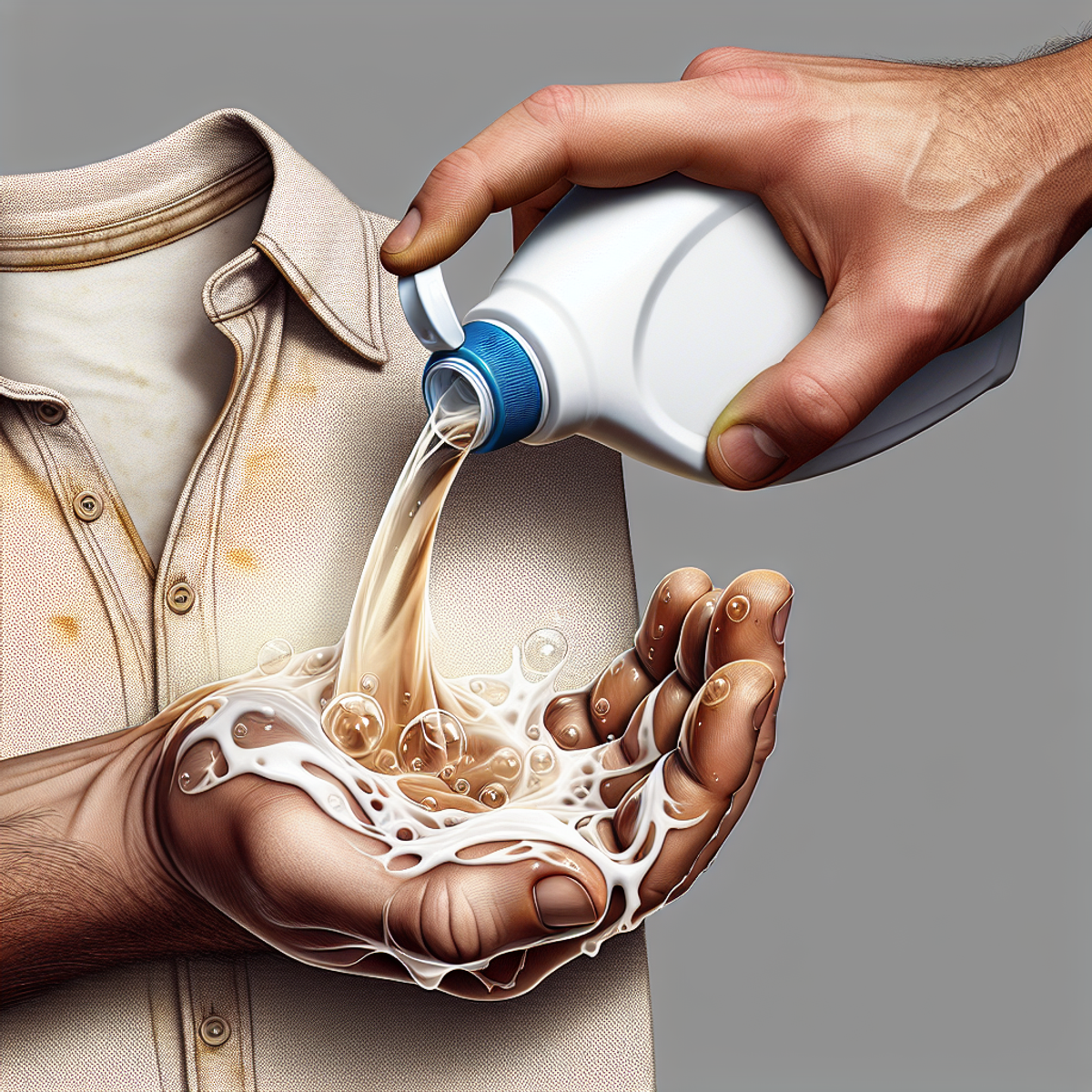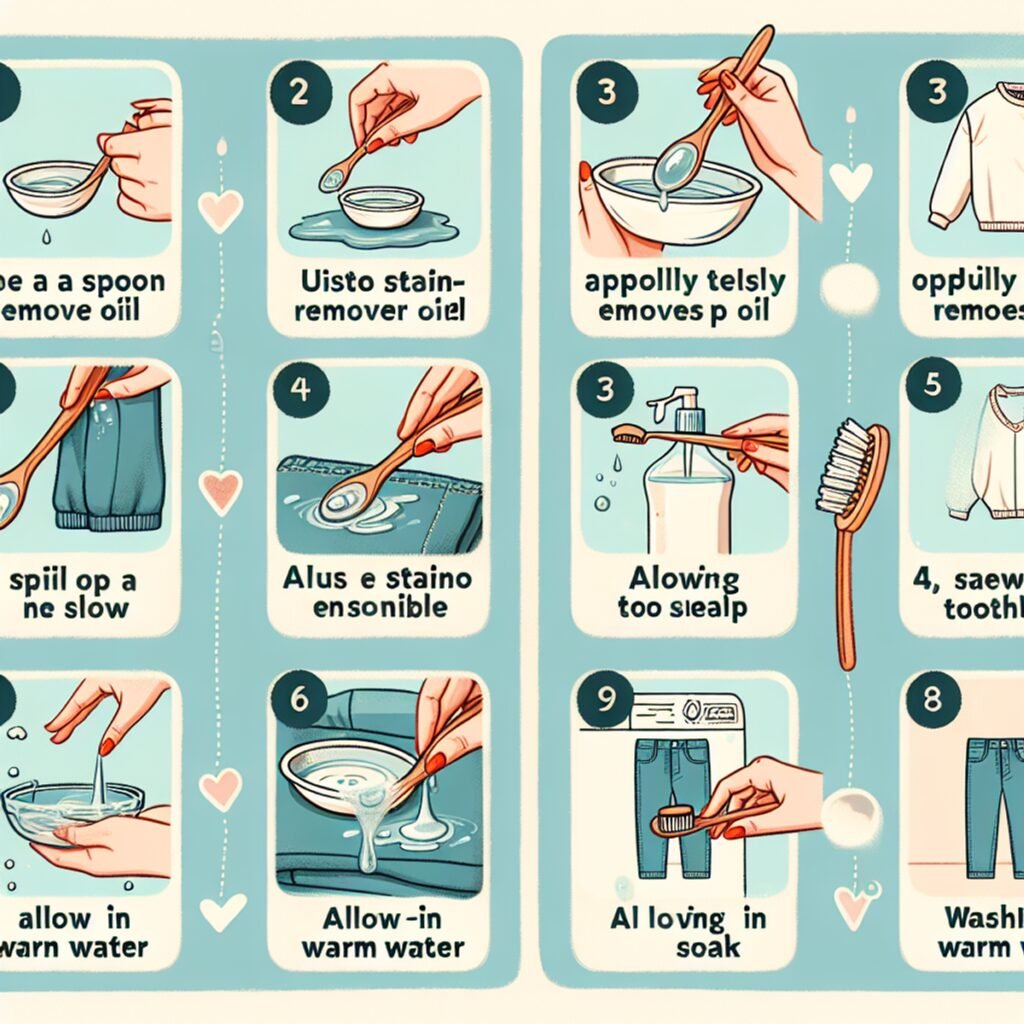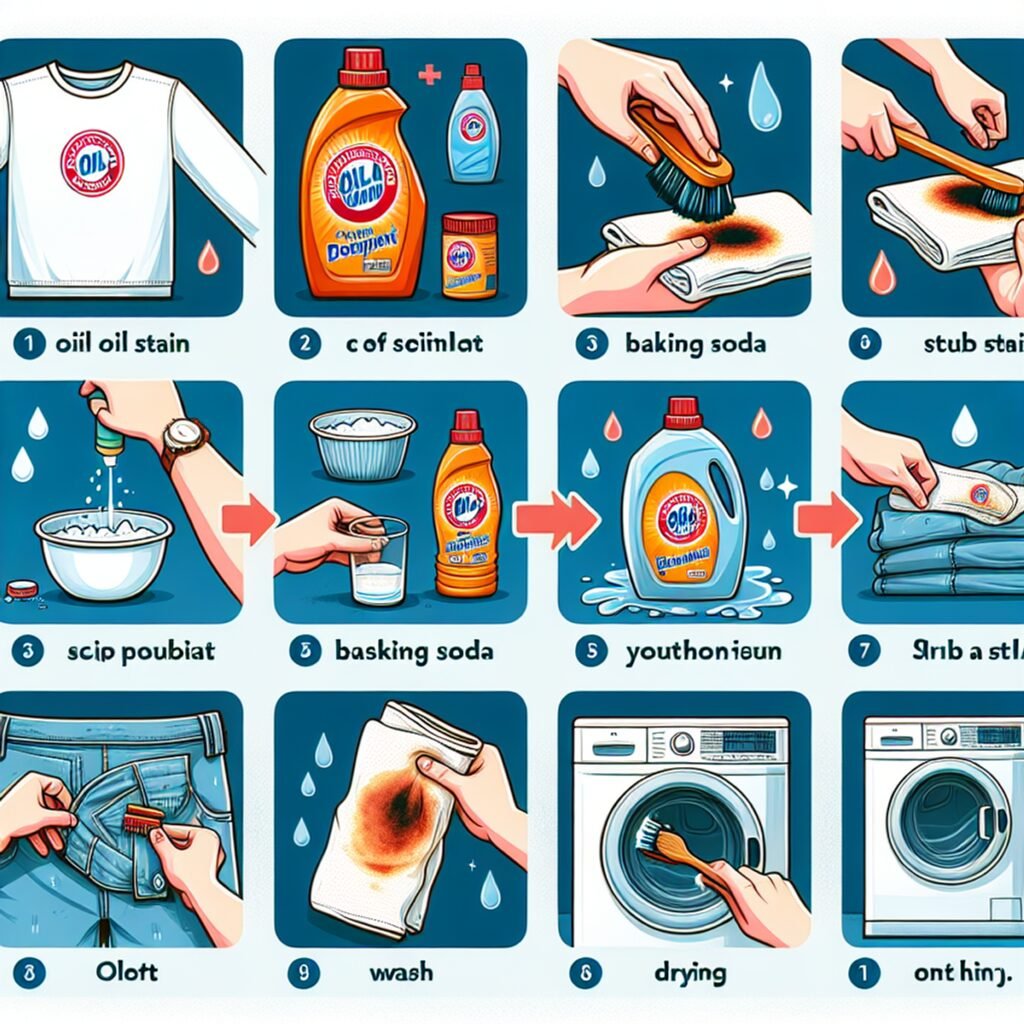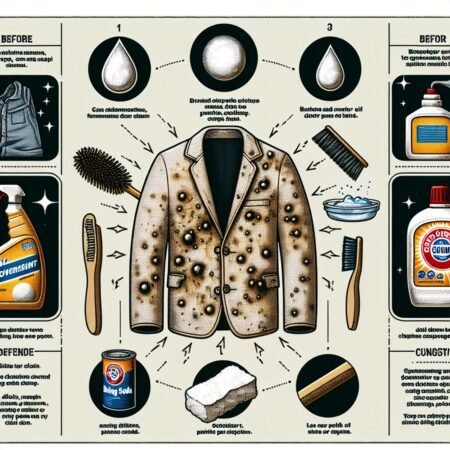
Introduction to How to Get Oil Stains Out of Clothes
Oil stains are a common and stubborn type of stain that many people struggle with. Whether it’s from cooking oil, motor oil, or grease, these stains can be frustrating to remove. That’s why it’s important to know how to properly remove oil stains from clothes in order to prolong their lifespan and maintain their appearance.
In this article, we will discuss effective methods, recommended products, and useful tips for getting rid of different types of oil stains. But before we delve into the techniques, it’s worth mentioning the significance of checking the fabric care label before attempting any stain removal technique. Different fabrics require different care, and using the wrong method could potentially damage the garment.
To help you navigate through the process of removing oil stains from your clothes, we have provided step-by-step instructions and recommendations for various scenarios. From pre-treating fresh oil stains to dealing with old and set-in ones, we’ve got you covered.
1. Pre-Treating Oil Stains

Pre-treatment is essential for loosening and lifting oil stains before washing. It helps prepare the fabric for effective stain removal.
Method 1: Using Dish Soap and Warm Water
Dish soap is a readily available household item that works effectively on fresh oil stains. Here’s how you can pre-treat stains with dish soap and warm water:
- Blot the stained area with a paper towel to absorb excess oil.
- Apply a small amount of dish soap directly to the stained area.
- Gently work the dish soap into the fabric using your fingers or a soft brush.
- Let it sit for 5-10 minutes to allow the soap to penetrate the oil stain.
- Rinse the treated area with warm water, ensuring all the soap is removed.
Remember to avoid rubbing the stain as this can cause it to spread further. Blotting gently is key to prevent damage to the fabric.
Method 2: Enzyme-Based Liquid Detergent
Another way to pre-treat oil stains is by using enzyme-based liquid detergent. These detergents contain specialized enzymes that effectively break down oily residues.
When using enzyme-based liquid detergent:
- Follow the product’s instructions for optimal results, as different detergents may have varying application methods.
- Apply a small amount of the detergent directly onto the stained area.
- Allow it to sit for a suitable duration based on the product’s guidelines to ensure thorough penetration and action on the oil stain.
- Wash the garment as usual after pre-treatment.
Using an enzyme-based liquid detergent can be particularly beneficial for stubborn or set-in oil stains, as the enzymes work to break down and lift the oily residues from the fabric fibers effectively.
2. Removing New Oil Stains

When it comes to oil stains, it’s important to distinguish between new and old stains because their removal techniques may vary. In this section, we will focus on removing new oil stains and provide additional tips for dealing with specific types of new stains such as motor oil stains, oil-based paint stains, and grease stains.
Method for New Oil Stains: Dish Soap and Warm Water
As mentioned in the previous section, dish soap is a readily available household item that works effectively on fresh oil stains. To remove new oil stains, follow these steps:
- Blot the stain: Start by blotting the stain with a clean cloth or paper towel to remove any excess oil. Remember to blot, not rub, the stain to prevent it from spreading further.
- Pre-treat with dish soap: Apply a small amount of clear dish soap directly onto the stained area. Gently work the soap into the fabric using your fingers or a soft brush.
- Let it sit: Allow the dish soap to sit on the stain for about 10-15 minutes to penetrate and break down the oil.
- Rinse with warm water: Rinse the garment under warm running water to remove the dish soap and loosened oil residue.
- Check for lingering stains: If any traces of the stain remain, repeat steps 2-4 until the stain is completely removed.
Additional Tips for Removing Specific Types of New Oil Stains
Different types of oils can leave distinct stains on clothing. Here are some targeted tips for dealing with common types of new oil stains:
- Motor oil stains: Sprinkle baking soda or cornstarch over the stained area to absorb excess oil before pre-treating with dish soap and warm water.
- Oil-based paint stains: Use a paint thinner or turpentine as a pre-treatment before applying dish soap and warm water. Be sure to follow the manufacturer’s instructions and work in a well-ventilated area.
- Grease stains: For grease stains, try using a grease-fighting dish soap, such as Dawn or Fairy, which are known for their effectiveness in removing grease stains. Alternatively, you can also refer to this Quora post that offers some additional insights and suggestions for removing grease stains before they set.
Remember, prompt action is key when dealing with oil stains. The sooner you address them, the easier they are to remove.
3. Dealing with Old and Set-In Oil Stains

When dealing with old and set-in oil stains, it’s essential to acknowledge the greater challenge they pose, often requiring more intensive treatment methods than fresh stains. For these stubborn stains, you may need to employ specialized techniques and products to effectively remove them.
Method 1: Tide Detergent and Warm Water Soak
Tide Detergent is known for its powerful stain-fighting properties, making it an excellent choice for combating old and set-in oil stains. To use this method, create a solution of warm water and Tide Detergent, then soak the affected garment in the solution for an extended period before laundering it as usual. This soaking process allows the detergent to penetrate the fabric fibers, loosening the stubborn oil stains and preparing them for removal during washing.
Method 2: Oily Road Water Stain Removal Technique
Old and set-in oil stains caused by greasy road water present a unique challenge due to their distinct composition. In such cases, it’s essential to use a specialized technique or product specifically designed to address these types of stains. Be sure to follow any recommended precautions or additional measures when using this technique to ensure safe and effective stain removal.
By implementing these targeted methods for dealing with old and set-in oil stains, you can effectively restore garments that have been marred by stubborn oil residue.
4. Recommended Products for Oil Stain Removal

When it comes to removing oil stains from clothes, there are several effective products that you can use depending on the situation. While the previous methods mentioned in this guide are highly effective, these recommended products can provide additional assistance in tackling stubborn oil stains:
1. Clear Dish Soap
Clear dish soap is a versatile and readily available product that works wonders on oil stains. Its grease-cutting properties make it an excellent choice for pre-treating oil stains before washing. Here’s how you can use clear dish soap effectively:
- Gently blot the stained area with a clean cloth or paper towel to remove any excess oil.
- Apply a small amount of clear dish soap directly onto the stain.
- Gently rub the dish soap into the stain using your fingers or a soft brush.
- Allow the dish soap to sit on the stain for about 10-15 minutes.
- Rinse the garment with cold water to remove the soap and check if the stain has been fully removed. If not, repeat the process or move on to another method.
2. Tide Ultra Stain Release Liquid Detergent
Tide Ultra Stain Release Liquid Detergent is specially formulated to tackle tough stains like oil. It contains enzymes and surfactants that help break down oily residues and remove them from fabrics. To use this detergent for oil stain removal:
- Follow the instructions on the detergent bottle to measure the appropriate amount for your load of laundry.
- Pre-treat the oil-stained area by applying a small amount of Tide Ultra Stain Release Liquid Detergent directly onto the stain.
- Rub the detergent gently into the fabric, ensuring it penetrates the fibers.
- Let it sit for at least 5-10 minutes before laundering as usual.
3. WD-40
WD-40 is primarily known as a water displacement lubricant, but it can also be used as a last resort for stubborn oil stains. However, it’s important to exercise caution and check the fabric care label before attempting this method, as WD-40 may not be suitable for all fabrics. If you decide to use WD-40:
- Spray a small amount of WD-40 directly onto the oil stain.
- Gently rub the area with a clean cloth or soft brush to work the WD-40 into the fabric.
- Allow it to sit for a few minutes before laundering the garment as usual.
Remember, always check the fabric care label before using any product to remove oil stains. Some fabrics may require specific treatment methods or professional cleaning.
5. Other Tips for Effective Oil Stain Removal

When it comes to effectively removing oil stains from clothes, there are a few additional tips that can help ensure successful results. Here are some recommendations to consider:
- Follow garment care instructions: Before attempting any stain removal technique, it’s important to check the fabric care label on your garment. This will provide valuable information regarding machine wash or hand wash preference, as well as the appropriate water temperature to use. Following these instructions will help prevent any potential damage to your clothes.
- Air dry the garment: After you’ve successfully removed the oil stain, it’s best to air dry the garment instead of using a dryer. The heat from the dryer can set any remaining traces of oil and make them more difficult to remove later on. By allowing the garment to air dry, you give yourself a chance to inspect it for any lingering stains before exposing it to heat.
- Consider seeking professional help: If you’ve tried multiple stain removal techniques and the oil stain still persists, or if the affected garment is valuable or delicate beyond personal treatment, it may be worth seeking professional help. Laundry experts or specialized cleaning services like Maytag have the knowledge and expertise to handle stubborn stains and delicate fabrics. They can provide guidance on the best course of action and increase your chances of successfully removing the oil stain.
Remember, different fabrics and types of oil stains may require specific approaches for optimal results. By following these additional tips and considering professional assistance if needed, you can increase your chances of effectively removing oil stains from your clothes and prolonging their lifespan.
Conclusion
When it comes to removing oil stains from clothes, time is of the essence. Acting quickly can prevent the stains from setting and becoming more difficult to remove. Throughout this comprehensive guide, we have discussed various methods and techniques for effectively removing oil stains from different types of fabrics. However, it is essential to remember a few key points:
- Always refer to the fabric care label before attempting any stain removal technique. Different fabrics may require specific treatment methods.
- Be cautious when using products or methods on delicate or valuable garments. If in doubt, seek professional help from laundry experts or specialized cleaning services.
- Air drying the garment after stain removal attempts is recommended to prevent heat from the dryer from setting any remaining traces of oil.
- Stay proactive in preventing oil stains by being mindful of activities or environments that may expose your clothing to such stains. Consider wearing aprons or applying stain-resistant finishes to frequently worn items.
Remember, practice makes perfect. Feel free to try out the different methods and techniques discussed in this article, keeping in mind the principles of pre-treatment and selecting the appropriate approach based on the age and type of oil stain. With a little patience and some trial and error, you can successfully remove oil stains from your clothes and prolong their lifespan.
FAQs (Frequently Asked Questions)
What is the significance of knowing how to properly remove oil stains from clothes?
Knowing how to properly remove oil stains from clothes is significant because it can prolong the lifespan of the garments and maintain their appearance. Additionally, it helps to prevent the stains from becoming more difficult to remove over time.
Why is it important to check the fabric care label before attempting any stain removal technique?
Checking the fabric care label before attempting any stain removal technique is important to avoid damaging the garment. Different fabrics may require different treatment methods, temperatures, or products, so it’s crucial to follow the guidelines provided on the care label.
What are the recommended methods for pre-treating oil stains?
The recommended methods for pre-treating oil stains include using dish soap and warm water, as well as enzyme-based liquid detergent. Both methods are effective for loosening and lifting oil stains before the actual washing process.
How can old and set-in oil stains be effectively removed?
Old and set-in oil stains can be effectively removed using Tide Detergent and warm water soak, as well as specialized techniques or product recommendations for specific types of old stains, such as oily road water stains. These methods require more intensive treatment due to the stubborn nature of old oil stains.
What are some recommended products for oil stain removal?
Recommended products for oil stain removal include clear dish soap, Tide Ultra Stain Release Liquid Detergent, and WD-40 as a last resort for stubborn oil stains. It’s important to refer to the fabric care label before using any product to ensure compatibility with the garment.
What are some additional tips for effective oil stain removal?
Additional tips for effective oil stain removal include following the garment’s care instructions regarding machine wash or hand wash preference and appropriate water temperature. It’s also recommended to air dry the garment after stain removal attempts, and seek professional help from laundry experts if needed.






